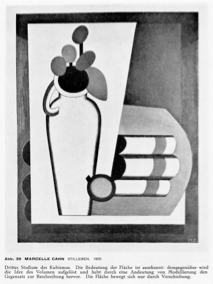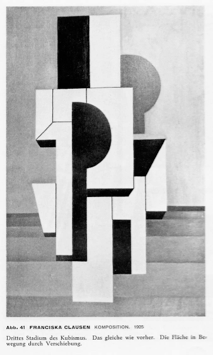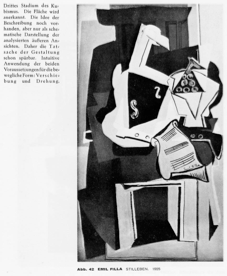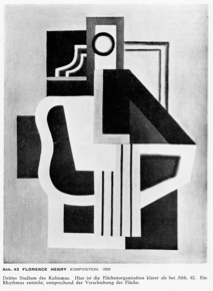Back to item index
Previous (Georges Valmier)
Cahn, Carlsund, Clausen, Filla, Henry

39. Marcelle Cahn: Still Life, 1925
Third phase of Cubism. The importance of the surface is recognised and the idea of volume is dissolved. The contrast with the descriptive approach is affirmed through a hint of modelling. The surface is confined to the movement of translation.

40. Otto Carlsund: Mural Painting, 1925
Third phase of Cubism. The same observations as for ill.39. The painter is striving towards a plastic organisation which will correspond to the nature of the surface. Depth is re-asserted itself through the emphasis on modelling and this has the effect of weakening the realisation of the rhythm.

41. Franciska Clausen: Composition, 1925
Third phase of Cubism. The same observations as for the previous illustration. Movements of translation are accomplished through the surface.

42. Emil Filla: Still Life, 1925
Third phase of Cubism. The importance of the surface is recognised. The idea of description is still present, but only as a schematic representation of external appearances which have been subjected to a process of analysis. In this way, the plastic nature of the surface becomes visible. The two necessary preconditions of mobile form - translation and rotation - are used intuitively.

43. Florence Henry: Composition, 1926
Third phase of Cubism. Here the organisation of the surface is asserted more clearly than it is in ill. 42. A rhythm appears, which corresponds to the movements of the surface in translation.
Next (Hone, Jellett, Poznansky, Pouyaud)